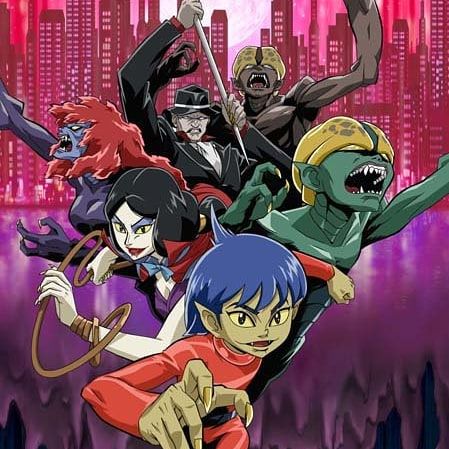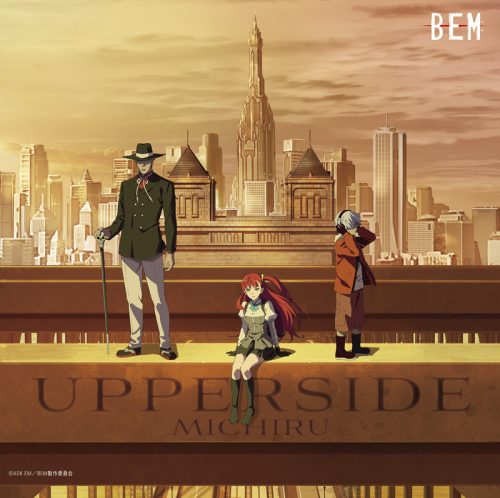
What makes the 2019 Bem distinguishing compared to most of our other articles of Then Vs. Now is that it happens to be the second remake of the original 1968 series. The first remake aired in 2006, and to commemorate its 50th anniversary, we’re going to compare all three versions of Bem.
Similar Stories/Different Executions
What all three series share is that the main trio consists of the titular Bem and his two companions, Belo and Bela. They’re youkai ningen, or humanoid monsters, who wish to become full fledged humans, which is consistent in all three versions. While they’re all fundamentally youkai, they can assume a human-like form. Even when they’re disguised as humans, they still possess amazing abilities such as super strength, speed, agility, and regenerative abilities, but they’re all expressed differently. In the 2019 version, our heroes are impervious to most forms of pain, especially firearm bullets. In the original 1968 version, they can temporarily hurt by bullets.
In the 1968 version, they tend to have abilities that traditional ghosts would have. In that edition, they can make themselves invisible, and phase through solid objects. In the 2006 and 2019 versions, these abilities are non-existent. As for how their stories flow, they’re all significantly different. As portrayed in the 2019 series, the main trio fights the forces of evil in the ghettos of Libra City (which largely resembles New York City), or the Outside, but in the 1968 series, they travel around from town to town (which we can assume to be isn’t Japan since they meet characters that don’t have Japanese names) like in the 1960’s American drama, The Fugitive, and fight either a ghost or a really bad human. The 2006 series also takes place in one city, but takes place in a city that is multicultural since it features characters with Japanese names such as Kira Hinata and Kaito Sora, who become Belo’s key allies. Like in the 2019 series, the 2006 series has our heroes fighting other youkai.
As shared before, the 1968 version has our trio fighting all kinds of baddies. In one episode, they can be fighting a gang of criminals, and they can be helping a town get rid of a youkai in the next. In the 2006 series, the trio largely fights ghosts and demons that are supernatural in nature, but for the 2019 version, as opposed to fighting beings that are supernatural in nature, the youkai they do battle with are sci-fi in nature.
Belo and Bela’s Portrayal Portrayal
The biggest difference between the original and the modern series is how Belo, the boy youkai, is portrayed. In the 1968 and 2006 versions, he’s very playful and actively wants to make friends with other children. He’s very talkative and acts like just about any regular kid. In the 2019 version, he does hang out with other kids, but even in their presence, he has a stoic and quiet personality, and doesn’t really care too much about making friends but if they invite him to hang out with them, he’ll just go along out of curiosity. While he tends to get his ass kicked in fights in the 1968 series (even against regular humans!), he’s capable of holding his own in the 2019 version.
Another notable change is Bela. In the 2019 version, she passes herself off as a high school student but in the 1968 and 2006 versions, she assumes an adult form and has a maternal relationship with Belo. The 1968 and 2006 versions also have her come across as a bit of a sadist as she enjoys terrifying her enemies while this particular quality is taken out in the 2019 version to make her more believable as a teenager. As for Bem, his role is more or less the same as someone who is presentably stoic and wishes to know what it’s like to be human.
Character Designs
Another significant difference is how the three main leads are designed. In the 2019 version, their human forms can pass off as human, but they do have some notable qualities that make them stand out such as their pointy ears and their pale olive skin tone. In the 1968 and 2006 versions, they’re a different story. As for Bem, he still carries a cane, wears, a suit, and a hat, but when you look at his face, he looks like Count Orlock from the classic horror movie, Nosferatu. When you look at Bela in the 2019 version, she’s a teenager in a school uniform and has red hair. However, in the 1968 and 2006 versions, she looks like a vampire in her human form and has black hair. As for Belo, in the 2019 version, he has white hair, wears red denim, and has regular shoes and always has on a pair of wireless headphones. In the 1968 and 2006 versions, he has blue hair, wears red sweats, and shoes that looks like something that elves would wear. While the 1968 and 2006 versions share the same character designs, the one notable difference is that even in their human forms, the main trio have three fingers in the 1969 versions, but in the 2006 and 2019 versions, they have five. As for their monster forms, the designs are pretty much the same in all versions.
Final Thoughts

While all three versions of Bem are fundamentally the same about what it means to become human, all of their executions are different. If you want a serious action series, the 2019 version is obviously it. If you want something more for children and with comedy, then we also recommend the 1968 and 2006 versions. While the older versions are probably hard to find outside of Japan, if you can somehow find the older version to Bem, we say give them a shot and you’ll be surprised not just by how they’re different, but how they can be the same as well.
Recommended Post

